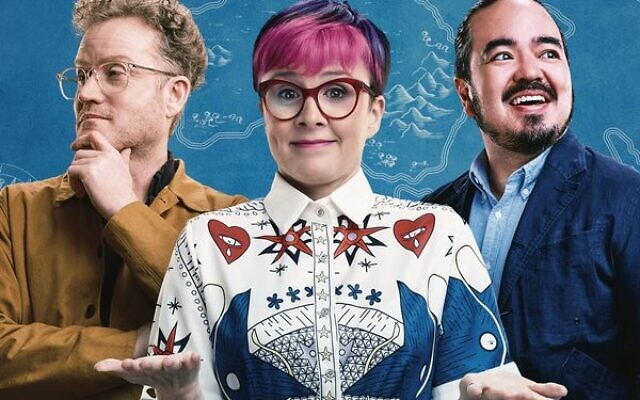Hey Australia, who the bloody hell are you?
Safran said what is excellent about the program is that it shows all cultures cannot be treated as “basically the same story, just with different window dressings”.
Have you ever stopped to think about what makes Australia the country it is? Who the bloody hell we all really are?
SBS Australia is seeking to answer this question with the new series Who the Bloody Hell Are We? featuring John Safran, Cal Wilson and Adam Liaw, who explore how people of Jewish, Kiwi and Chinese descent, like themselves, fit into our national narrative.
As Safran put it to The AJN, he’s the “Jewish guy”.
“SBS and the production company had this idea of looking at lesser-known histories of Australia,” Safran explained when asked how he got involved.

“SBS are always great, especially when I ask if I can dig a bit deeper.”
Safran said a lot of what he found out were things he didn’t know beforehand.
“I kind of felt that the history of the Jews in Australia must be more awkward than the story of ‘suffering in Europe and then you came to Australia and it was the golden age’. When I started digging away, I realised it was way more interesting than that.”
For example, Safran revealed that literary figures like Henry Lawson and Norman Lindsay had quite spiky attitudes towards Jews that were exposed in their literature.
Safran also uncovered the story of a Jewish woman who came from England as a convict and ended up marrying a man who was essentially the leader of the new colony in New South Wales. She wasn’t allowed to express any religious belief other than Christianity.
When Safran spoke to her descendants, it became clear that her children and grandchildren being baptised probably wasn’t something she wanted. Yet, she had no choice, it was what people had to do to move up in society in Australia at the time.
“You could be Jewish, as long as you were Anglican,” Safran explained. “That’s a very different story to the one that described a go-getting Jewish woman who fought her way up from being a convict to the first lady.”
Safran said there are so many other stories that mirror this experience. And ultimately, it’s helping him, as well as Wilson and Liaw, educate the viewers. For Safran, it was especially the case in correcting the understanding that all Jews are white Europeans.
The show shares stories from each key era – convict era, bushrangers and more right through until modern times. The modern story that Safran shares is that of the vandalism of Very Good Felafel in Brunswick, Melbourne. The owner fled Iraq, arriving in Australia via Israel.
Safran manages to tell the stories in a fun way, demystifying many of the ideas around Jews in Australia today.
Safran acknowledged it was challenging but fun, especially because it was the first season.
“First seasons are always sort of ‘working out the show’, and I love that,” Safran said.
“I love that I could really make my mark on it because it was the first season and things weren’t locked in. So I did push back and make things a bit spicier, and I got to pull the rug out from under things. And SBS were really receptive to that.”
Safran said what is excellent about the program is that it shows all cultures cannot be treated as “basically the same story, just with different window dressings”.
“I found that things were really specifically Jewish about the experiences we covered, so it’s not just repeat, repeat, repeat with the other cultures,” he explained.
As SBS describes it, it’s shameless entertaining Australian history, but not as we know it.
Who the Bloody Hell Are We? premieres on SBS on Wednesday, July 19 at 7.30pm and continues weekly. All three episodes will be available to stream on SBS On Demand.


comments